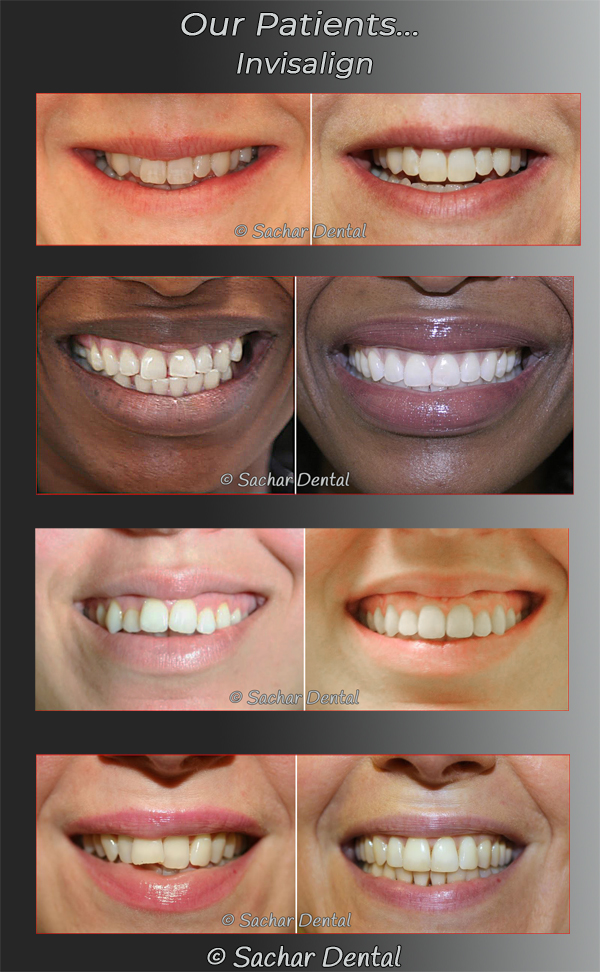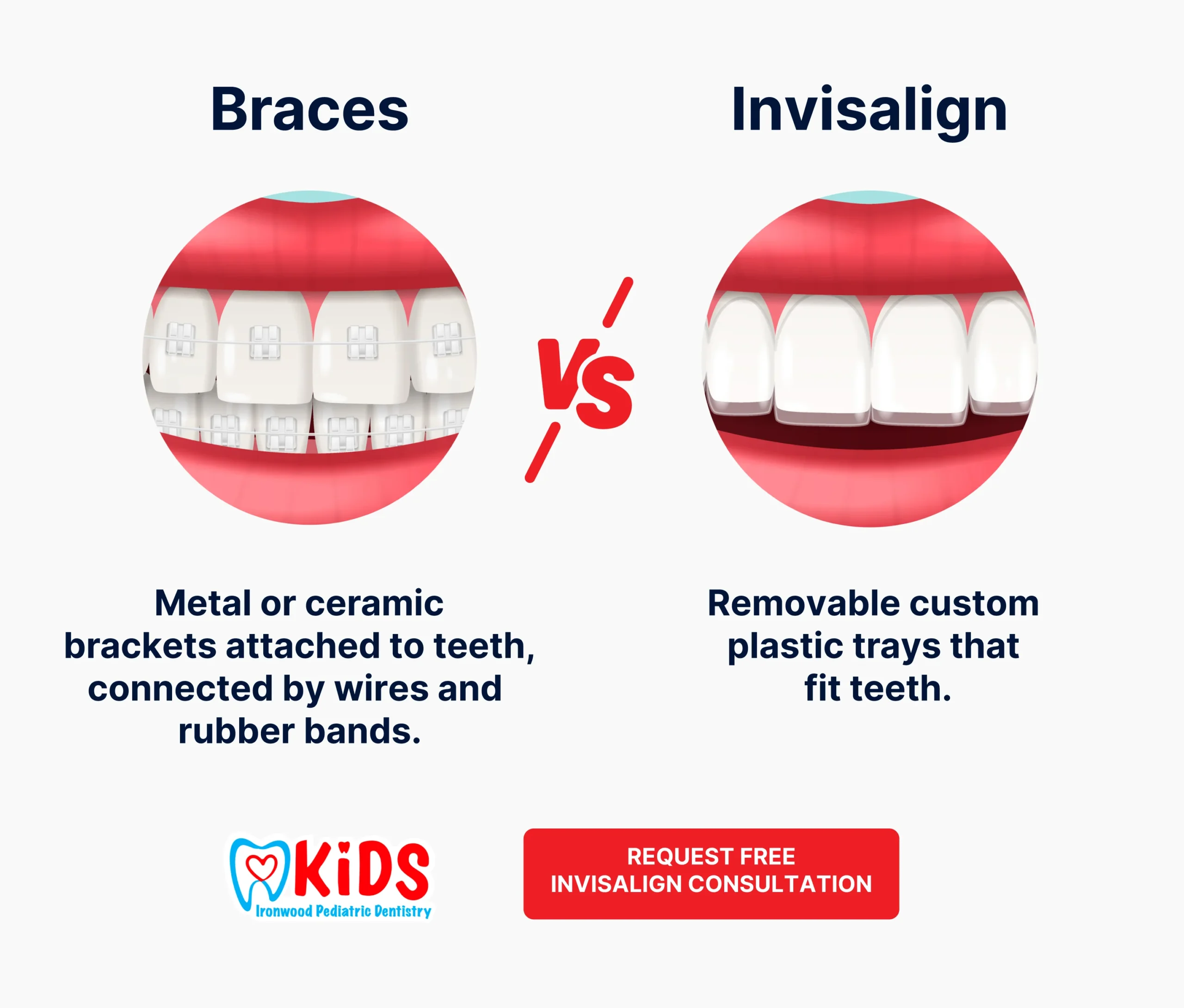Success Stories: How Invisalign Changed Lives and Improved Confidence
Success Stories: How Invisalign Changed Lives and Improved Confidence
Blog Article
Invisalign vs. Standard Braces: Which Alternative Is Right for You?
When taking into consideration orthodontic therapy, the choice between Invisalign and typical braces offers several vital factors that warrant cautious assessment. Invisalign supplies a discreet choice with removable aligners, while traditional braces supply a much more visible yet effective solution for extreme misalignment.
Overview of Therapy Choices

On the other hand, conventional braces are composed of steel brackets and cords that are bound to the teeth. This approach applies continuous pressure in time to achieve placement. While reliable for intricate orthodontic problems, standard braces require regular check outs for changes and can posture difficulties in maintaining oral health because of the problem of cleaning about brackets and cords.
Both options have their advantages, and the choice usually pivots on details dental problems, way of life choices, and individual conformity. Ultimately, speaking with an orthodontic expert is crucial for identifying one of the most suitable treatment plan tailored to private demands. Recognizing the nuances of each option can significantly influence the total success of orthodontic therapy.
Aesthetic Considerations
A considerable variable influencing the choice between Invisalign and standard dental braces is the aesthetic allure each treatment offers. Invisalign aligners are crafted from clear plastic, making them practically unseen when put on.
On the other hand, traditional dental braces contain steel braces and cords, which can be more visible. While developments in orthodontic modern technology have actually caused the growth of smaller brackets and colored elastics, traditional dental braces still maintain a more conspicuous account. For some individuals, the exposure of braces may hinder them from seeking needed treatment.
Ultimately, the choice in between Invisalign and conventional braces might rest on individual preferences concerning aesthetic appeals. Clients who focus on discretion frequently favor Invisalign, while those that are much less concerned about visibility may opt for typical braces. Understanding the aesthetic effects of each alternative is important for making an educated choice that aligns with one's way of life and preferences.
Comfort and Convenience

In terms of convenience, Invisalign aligners are removable, enabling patients to appreciate their favorite foods without limitation and preserve ideal oral health. Cleaning and flossing are streamlined, as the aligners can be obtained during these routines, whereas traditional dental braces call for mindful maneuvering around cables and brackets.
In contrast, typical braces necessitate regular modifications, making them much less hassle-free for those with active routines. Generally, the convenience and ease of Invisalign make it an appealing option for lots of people looking for orthodontic therapy.
Treatment Duration and Efficiency
While both Invisalign and typical braces are efficient in remedying dental imbalances, the duration of treatment can differ considerably in between the two options. Usually, Invisalign treatment can take anywhere from 12 to 18 months, relying on the complexity of the situation. The clear aligners function by gradually shifting teeth right into their desired settings, and regular follow-ups with an orthodontist aid make certain development remains on track.
On the other hand, conventional dental braces commonly need a longer dedication, generally varying from 18 months click for more to three years. This is because of their fixed nature and making use of wires and brackets, which can be extra effective for complicated situations and serious imbalances (Invisalign). The therapy effectiveness of typical braces is Continue well-documented, as they permit precise changes and higher control over tooth motion
Inevitably, the option between Invisalign and traditional braces may rest on both the awaited treatment duration and the certain oral concerns handy. Consulting with an orthodontist is important, as they can offer customized referrals based on individual requirements, guaranteeing the chosen approach straightens with wanted timeframes and outcomes.
Price Comparison and Insurance Policy Alternatives
Cost plays a considerable function in the decision-making process for people considering orthodontic treatment, whether going with Invisalign or typical dental braces. Typically, the cost of Invisalign varieties from $3,000 to $8,000, while conventional dental braces normally set you back in between $2,000 and $6,000. Factors influencing these costs include the intricacy of the instance, the duration of treatment, and geographical location.
Insurance policy coverage can dramatically influence out-of-pocket costs. Many dental insurance policy plans supply partial coverage for orthodontic treatments, yet the specifics can differ commonly. It is crucial for individuals to evaluate their insurance coverage to figure out the degree of coverage for either alternative. Generally, conventional braces may be a lot more often covered by insurance coverage strategies compared to Invisalign, which some insurance providers classify as a cosmetic treatment.
Additionally, numerous orthodontic methods use versatile repayment plans, making both treatment options much more available. Individuals need to ask about possible financing alternatives and discounts for in advance settlements. Examining the complete expense, including insurance policy benefits and layaway plan, is crucial for making an informed decision that straightens with both visual choices and budget plan factors to consider.

Verdict
In recap, the choice in between Invisalign and web typical braces depends upon multiple variables, consisting of aesthetic preferences, comfort, therapy period, and expense. Invisalign offers a very discreet, detachable alternative that helps with oral hygiene and dietary versatility, while conventional dental braces may be preferable for complex dental concerns and often come with a reduced cost point. Ultimately, consultation with an orthodontist is important to evaluate individual circumstances and identify one of the most appropriate treatment alternative for accomplishing ideal dental placement.
When thinking about orthodontic therapy, the option between Invisalign and standard dental braces offers several crucial aspects that warrant cautious analysis.Comparing Invisalign and typical dental braces discloses distinct treatment alternatives for orthodontic modification.While both Invisalign and typical braces are reliable in fixing oral misalignments, the period of therapy can differ dramatically in between the 2 options.Cost plays a significant duty in the decision-making procedure for people taking into consideration orthodontic therapy, whether opting for Invisalign or traditional braces.In recap, the option between Invisalign and typical dental braces pivots on multiple factors, consisting of visual preferences, comfort, therapy duration, and price.
Report this page